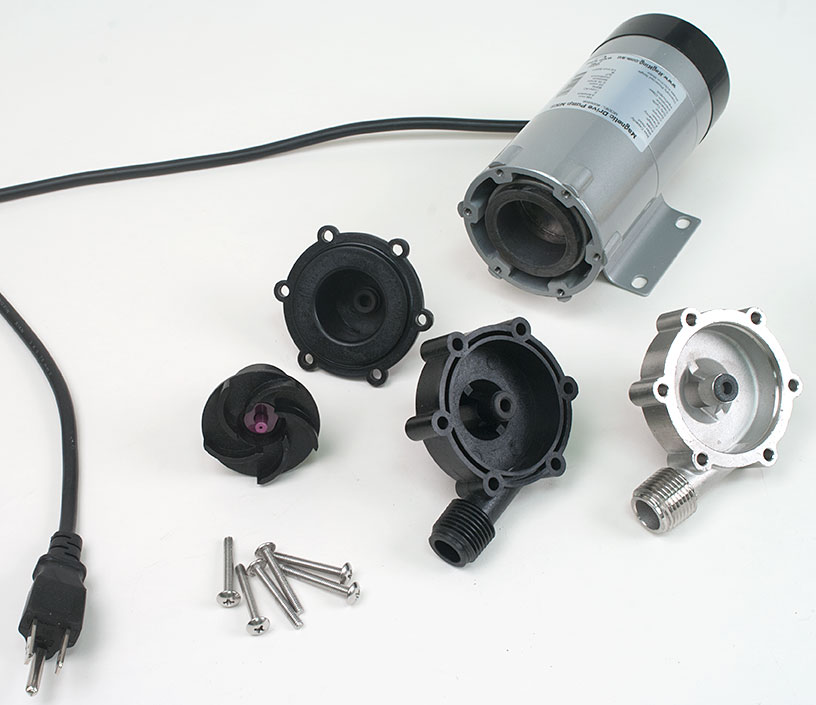I will be returning this pump. (Correction: I Will NOT Be Returning This Pump. Read The Update)
I purchased this pump with the intention of pumping wort from the keggle into a plate chiller and then back into the keggle to whirlpool. My plan was to cool in the kettle to take advantage of cold break then whirlpool to bring all the material into the center and pull clean wort from a side pick up tube. Seems pretty simple.
Until now, I have been single pass chilling using gravity to drain the keggle through the plate chiller and then into the fermenter. I recirculate ice water with a submersible pump so I can go from 200+degrees to about 47 degrees in a single pass. I have never had any issues with clogging my plate chiller using gravity
Yesterday i hooked up my new Mark II pump with the SS head and recirculated in the manner described above with hot PBW. Everything worked great. Today I brewed and the pump started out strong for about 30 seconds then went down to a trickle. I stopped, flushed the plate chiller with the garden hose, sanitized, and tried to get going again. No good, the second I turned the pump back on the wort went right down to a trickle. This pump could not move wort through a plate chiller and then into the boil kettle. The total vertical distance the pump had to work was about 3-4 feet. Gravity feeding wort was faster than a pump that advertises 5 gallons per minute?
This was just my experience with this pump. I had no restriction on the flow from either the kettle or the outflow of the pump. I used only 2 ounces of pellet hops and I have used far more hops than that in previous brews. Unless Im missing something, I say save your money.
I purchased this pump with the intention of pumping wort from the keggle into a plate chiller and then back into the keggle to whirlpool. My plan was to cool in the kettle to take advantage of cold break then whirlpool to bring all the material into the center and pull clean wort from a side pick up tube. Seems pretty simple.
Until now, I have been single pass chilling using gravity to drain the keggle through the plate chiller and then into the fermenter. I recirculate ice water with a submersible pump so I can go from 200+degrees to about 47 degrees in a single pass. I have never had any issues with clogging my plate chiller using gravity
Yesterday i hooked up my new Mark II pump with the SS head and recirculated in the manner described above with hot PBW. Everything worked great. Today I brewed and the pump started out strong for about 30 seconds then went down to a trickle. I stopped, flushed the plate chiller with the garden hose, sanitized, and tried to get going again. No good, the second I turned the pump back on the wort went right down to a trickle. This pump could not move wort through a plate chiller and then into the boil kettle. The total vertical distance the pump had to work was about 3-4 feet. Gravity feeding wort was faster than a pump that advertises 5 gallons per minute?
This was just my experience with this pump. I had no restriction on the flow from either the kettle or the outflow of the pump. I used only 2 ounces of pellet hops and I have used far more hops than that in previous brews. Unless Im missing something, I say save your money.




